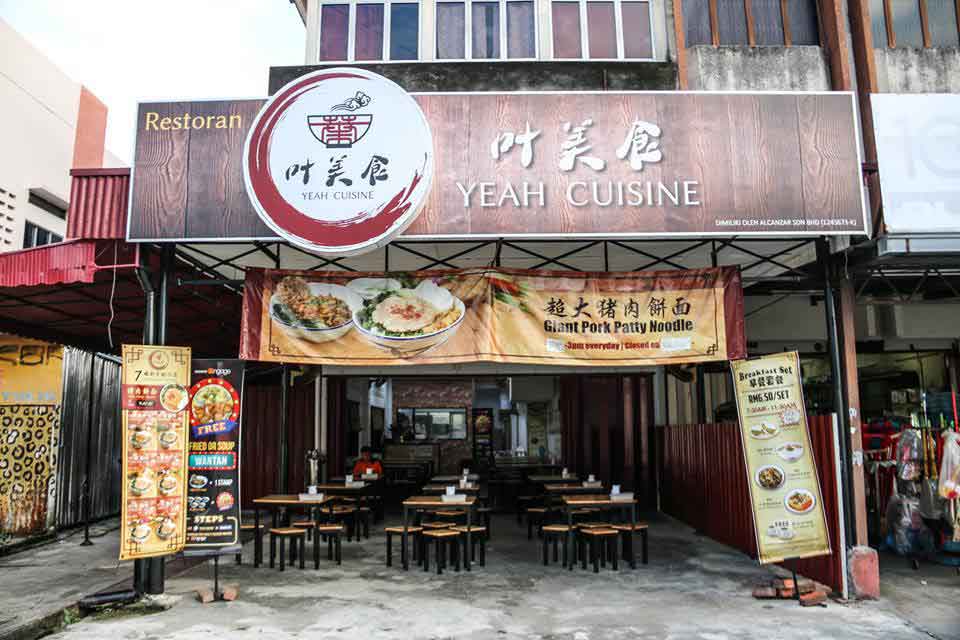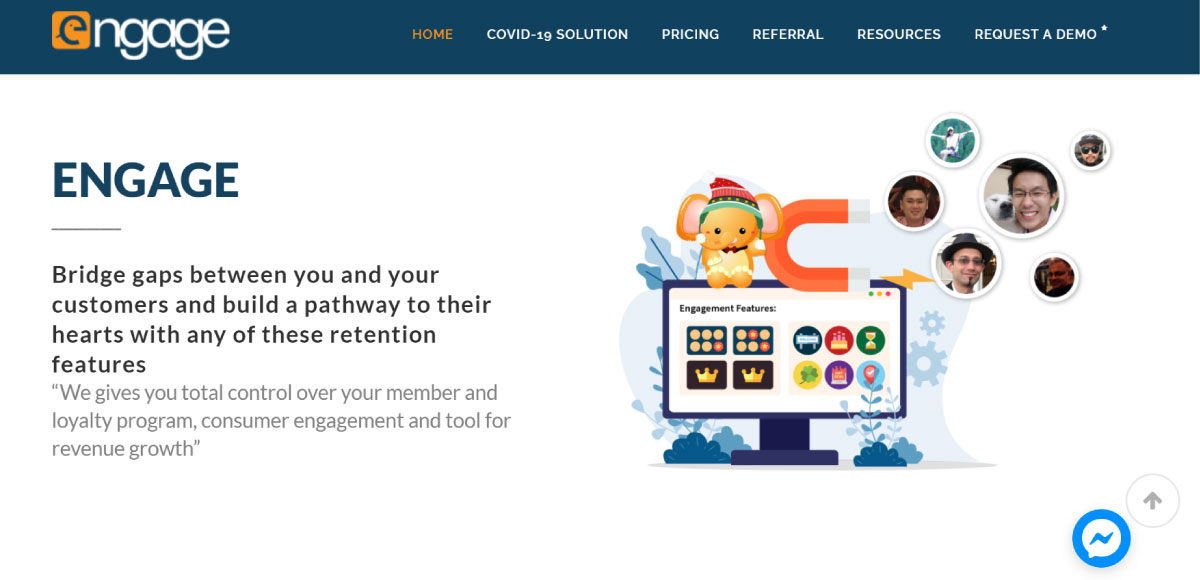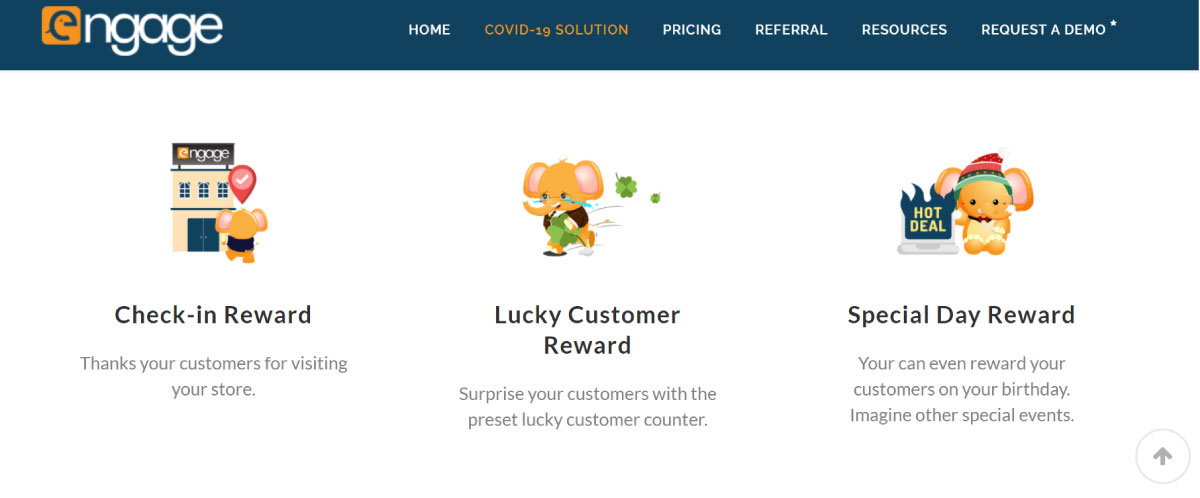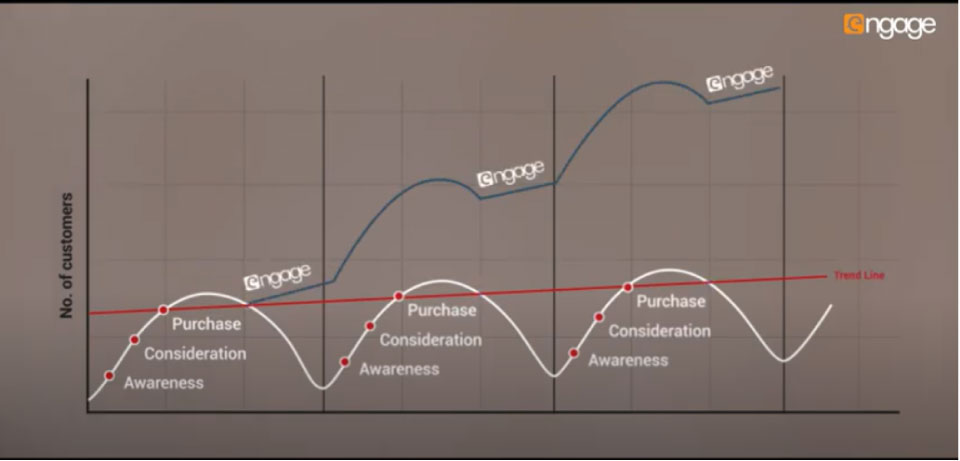Grow Your Business by Improving Customer Loyalty
Most business owners only think of attracting more customers to grow their business.
But there are other strategies that you can take to grow your business. One of the better ways is to focus on your existing customers.
Why? Because it’s 6 times easier to sell to existing customers rather than trying to acquire new customers
But how do you get customers to become repeat buyers?
To learn more, we had a chat with Zhen Yang, owner of Yeah Cuisine and founder of Engage. In our chat, we discovered ways to retain customer loyalty with data.
How To Increase F&B Customers & Sales with Data-driven Customer Loyalty
Zhen Yang came from an engineering background and became an owner of a restaurant, Yeah Cuisine, by chance after taking over a closing coffee shop.

Apart from providing unique meals, how did Yeah Cuisine continue to have repeat customers?
Here’s what we learnt:
1. Leverage on Social Media Influencers
When it comes to a food & beverage (F&B) business, it’s important to always be on the minds of your potential customers. Customers today are spoilt for choice when it comes to meals.
What would make customers think of you?
To make matters worse, Yeah Cuisine is located in an area within Ampang where customer traffic is low.
To encourage more frequent visits, Zhen Yang leveraged on social media influencers, who shared their experience having meals at his cafe.
By focusing on smaller influencers, he tapped into their network for followers, creating more mind share among people he was targeting. This enabled Zhen Yang to attract non-footfall traffic customers.
Having influencers promote your brand can be a great strategy, as people generally trust it more, compared to a company promoting its own name.
However, there’s a fine line between honest recommendation and overdoing it. If a promotion made by influencers becomes less-genuine, viewers may not trust the recommendation. That’s why you have to be careful in managing a genuine experience for the influencers you work with.
A strategy to begin influencer marketing is to first profile your best customers. Who are they, what do they do and what are their beliefs? Then, work with influencers who have a following of your most desirable customers.
An influencer may have many followers, but if their followers do not comprise the people you seek to serve, then it’s worth a pass.
2. Have a System that Encourages Repeat Visits.
An F&B business relies a lot on repeat customers, where each visit made by a customer increases their lifetime value (CLTV).
While social media and influencer marketing can attract new customers to your restaurant, you need a strategy to turn customers into repeat customers.
This is why Zhen Yang started Engage, a SaaS business that enables businesses to launch their own loyalty app, with a goal to increase repeat customers.
 Think of it as WordPress for loyalty apps, Engage provides businesses with a selection of ten loyalty features that can be customized to your company’s needs.
Think of it as WordPress for loyalty apps, Engage provides businesses with a selection of ten loyalty features that can be customized to your company’s needs.
Some of the loyalty reward strategies you can use to encourage repeat customers are:
- Reward Systems (eg: stamp and journey cards.)
- Specialty Event promotions (birthdays, anniversaries etc.)
- Tiered Membership Systems.
- Prepaid Credit Systems.

Because your business is unique, you might find different features to resonate better with your audience.
As Zhen Yang would explain:
We are not here to tell you how to run your business. Because you know your business better than we do. But here is something you can use to incentivize your customers. Try different features, test, and segmentize different rewards to different customer segments.
More importantly, seek to understand the needs of your customers before designing a loyalty program.
But how do you determine what your customers want?
This is where Engage leverages artificial intelligence (AI) technology to help understand your customer spending habits and determine how customers respond to different loyalty strategies.
Data on customers’ spending habits are recorded based on the three key matrices of the RFM methodology:
- Recency = when was your customer’s last visit?
- Frequency = how often do your customers visit?
- Monitory = how much do your customers spend?
With the data, customers are organized into targetable segments. This helps you identify which customers are loyal, uninterested, or dormant.
Taking a step further, Engage has plans to create internal suggestions within its app dashboard. Rather than just having segmented groups of customers, the app will also prompt marketing suggestions to the user on strategies to re-engage with certain customer segments.
With predictive analysis, Engage is looking to move into a scenario where businesses can predict which customer groups will become their best repeat customers.
3. Actively Respond to Customer Needs
Market trends and your customer needs are constantly changing.
To retain your customers, your loyalty program must adapt to the changes too.
When Yeah Cuisine became viral for the second time on social media, Zhen Yang initiated a loyalty membership program that rewards his customers every time they visit his cafe.
Most of the new customers signed up, and many became repeat customers. Zhen Yang advises businesses to hit a 20% repeat customer rate. Then again, that depends on the nature of the business you run.
While this could seem like a small gain for businesses, building a loyal customer base brings lots of revenue benefits over the long-run. A loyal customer base provides your business with a stable flow of income. It also gives the impression that you produce quality products, which in itself attracts more customers.

Having that stable resource of income through customer loyalty can save a business during times of crisis.
When Covid-19 struck, Yeah Cuisine could not open its business for months due to the lockdown. To keep the restaurant running, Zhen Yang utilized Engage’s credit system to promote an up-front sale of store credits to his customers.
By selling RM100.00 worth of credits at RM80.00, it provided value to customers and in turn, helped the business cover running costs during moments of downtime.
When the lockdown ended, customers returned to the cafe and spent their credits. This strategy not only helped Yeah Cuisine maintain its business but also created repeat customers.
Key Takeaways
As seen with Yeah Cuisine’s case study, having a loyal customer base is important for your business.
Here are the key takeaways from our discussion:
- Launch a loyalty program, they can turn into a stable source of income.
- Seek to understand your customers first, then build your marketing program around it.
- Make use of data you have in your business, it will reveal helpful insights that will grow your business
What are some strategies you use to turn customers into repeat customers? Do you use a loyalty program or is there something else?
Let us know in the comment section below.
*Zhen Yang is part of LEAD’s Google Analytics Primer student community.
Be Part of Engage Today
To increase local and international awareness about customer retention and to grow Engage, Zhen Yang recently launched an equity crowdfund (ECF) campaign on Mystartr to speed up the growth of Engage on an international scale.
Aside from growing Engage’s platform, the investment funds will be used to educate more businesses on ways to increase customer retention.
Learn more about Engage’s ECF campaign here: https://www.mystartr.com/projects/engage_blink



0 Comments